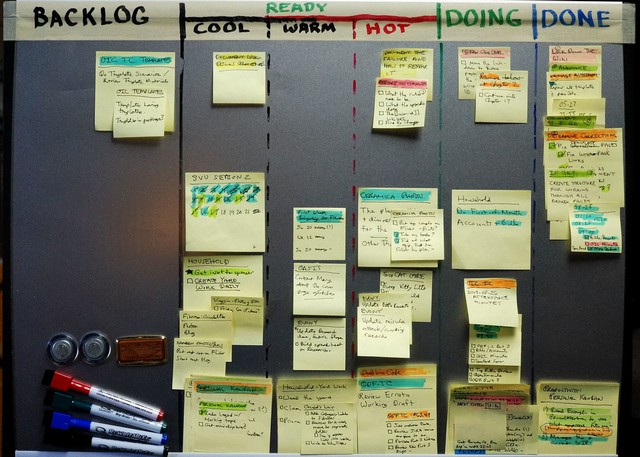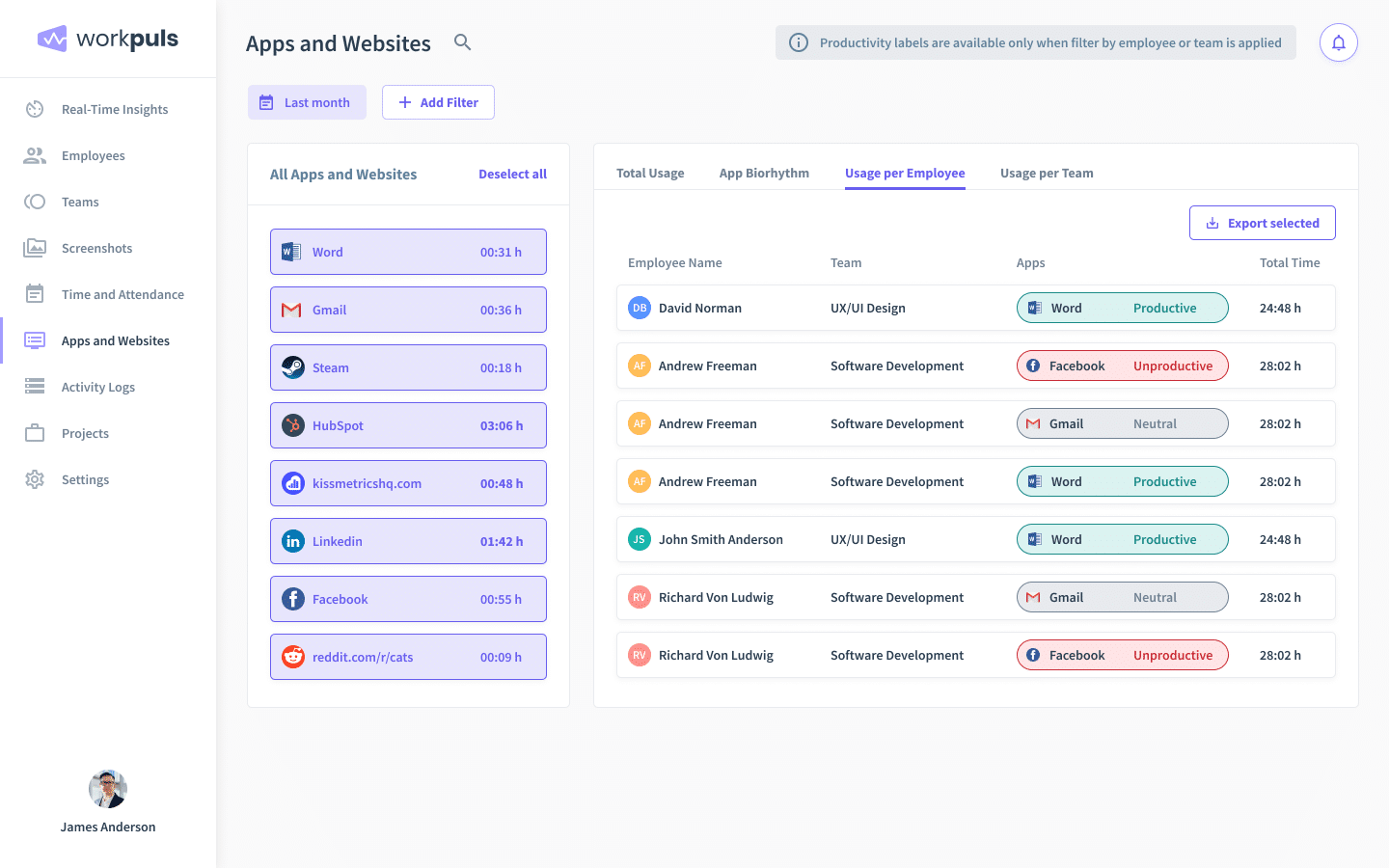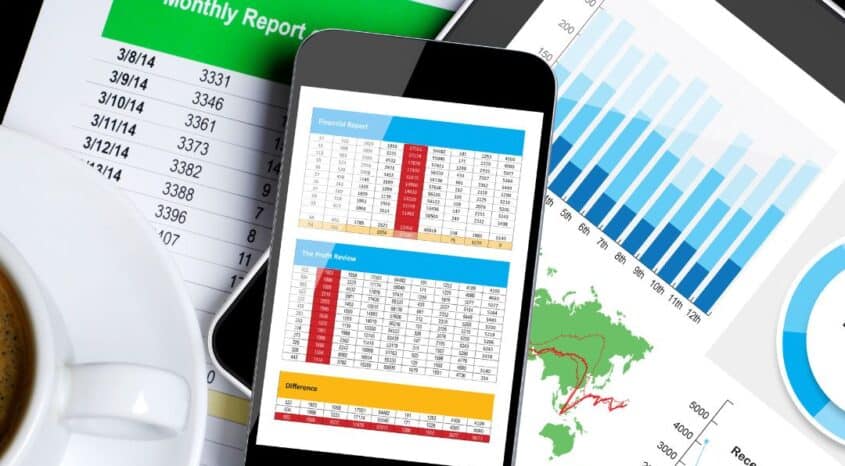As an ecommerce brand, you’re naturally focused on enhancing (read: obsessed with) ROAS, CAC, LTV, and other core metrics. But how consciously are you thinking about your team’s productivity?
In the whirlwind, multi-directional environment of ecommerce, it’s easy to go full speed from checking overnight sales over breakfast to writing the last email of the day in the evening. And everything in between often unfolds in an unrelenting, stream-of-work fashion, day after day.
When caught in this hyperspeed loop in which the ecommerce world operates, strategically thinking about productivity can get lost in the next upcoming promotion or new product launch. But, if you are looking to grow your ecommerce brand, optimizing productivity can be an incredibly effective lever to pull. Even just a small bump in productivity can have a meaningful impact on your growth.
The good news? Becoming more productive doesn’t have to mean wholesale changes to how you do business. To prove it, below are six helpful productivity hacks for your ecommerce brand that you can easily incorporate, starting today.

Credit: Wikimedia Commons
Productivity Hack #1 – Think Like a Tech Company
No, we don’t mean opening a free cafeteria filled with kombucha and pizza by the slice. Instead, think about how you manage projects in the same way tech teams do.
The prevailing management style for tech companies is the agile project management technique. It’s a popular productivity method, especially in software development teams, that is designed to maximize efficiency, productivity, and speed.
The agile method uses short work cycles known as sprints. Sprints ensure constant assessment and refinement of how your team works and the service and products they deliver.
The agile method is effective because of its focus on constant improvement and a higher level of customer involvement. In other words, it creates faster feedback loops that improve how your team operates. It provides room for teams and customers to give regular feedback to team leaders, which can in turn be used to optimize processes.
In the context of software development, this usually means releasing software, getting feedback from users, and then updating based on this feedback. As an ecommerce brand owner, your physical products may not be able to be updated on the fly in the same way. But this agile mindset can be used to constantly assess and improve other business areas, like marketing campaigns and customer service.
Some popular agile productivity methods and tools include:
Kanban
With this popular agile method, teams use a kanban board to record and track progress. It’s an excellent method for ecommerce brands because it ensures transparency, unifies team activity, and makes assessing performance clearer. It also encourages communication between teammates.
Scrum
Scrum helps teams build, deliver, and manage projects in complex environments. It’s a good fit for ecommerce brands because it aligns with the multi-faceted nature of managing your business. Designed for smaller teams of fewer than 10 people, it breaks organizational goals into short sprints of 2-4 weeks.
Productivity Hack #2 – Get More Done With Timeboxing
Clear, uninterrupted periods of work are somewhat of a rarity in modern teams where inboxes overflow and Slack messages ping about at all hours. In fact, employees are interrupted on average every 11 minutes throughout the day. Once distracted, it takes employees 23 minutes to refocus. That makes for a very disjointed workday. And something needs to be done about it.
Closely linked to agile methodologies, timeboxing is a time management method where individuals dedicate specific periods to complete tasks. Teams enter their tasks for the day into a calendar, then state the starting and completion time and the goal. During these “time boxes”, employees work exclusively on the assigned task.
The idea is to treat the time boxed entries like a scheduled meeting. You must complete the nominated task in the allocated time without rescheduling or any distractions. That means no email, no calls, no Slack messages.
Timeboxing is perfect for ecommerce brands as it can bring periods of calm, deep work amidst rapid fire daily life. It helps teams channel their focus to get things done. Its systematic approach to productivity ensures you can give 100 percent attention to high priority work.
What’s more, timeboxing improves time management and organization by setting strict time caps on tasks. For instance, so you don’t spend six hours designing the new pop-up artwork for your store on Canva.
Timeboxing can be used collectively, too. It allows teams to immerse themselves in a task together until its completion. It also helps reduce procrastination by breaking down tasks into small manageable chunks.
Productivity Hack #3 – Make Productivity Metrics Your Friend
To improve your productivity, you first need an objective understanding of it. Relying on intuition, estimations, and checking who’s online on Slack the latest will only get you so far.
Thankfully, as an ecommerce brand you’re already used to viewing the world through the lens of ecommerce analytics and metrics, like AOV and CPMs. So, adding productivity metrics to the mix will come breezily.
Tracking employee productivity metrics gives you a benchmark and real-time pulse of your team’s productivity. They provide quantified data about how your team uses their time throughout the day and, more generally, how efficient your workflows and processes are.
It’s important to note that monitoring productivity metrics isn’t about micromanaging or expecting your team to be 100 percent productive every hour of the day. Instead, it’s about getting an objective sense of how your team performs over time, identifying ways to improve your workflows, and recognizing your team’s performance. Dedicated productivity metrics work best in unison with other project management tools.
Turning to productivity metrics can be especially valuable if your team is remote or hybrid, as they provide a unified picture irrespective of location. This data can be used in conjunction with your other ecommerce data to form even deeper insights about your business.
Some of the most valuable productivity metrics for ecommerce brands include:
App and Website Usage
Credit: Workpuls
As an ecommerce brand, there’s a near-infinite number of tools and apps you could be using. This includes everything from an email marketing tool like Klaviyo to the latest Shopify plug-in.
App and website productivity metrics allow you to see which tools your team uses daily to get their work done.
This helps do a few things. First, it makes sure the right tools are being used by the right team members. Second, it lets you apply the 80/20 rule to see which tools provide the greatest return and which may be inefficient, or even redundant.
Productivity Benchmarking
Productivity tools can be used to effectively track and benchmark your team’s performance over time. Using productivity scores and trends, you can compare historical time periods to see what impact productivity had on overall performance and sales.
For instance, you can compare back-to-back weeks where revenue may have changed dramatically to see what, if any, link there is to your team’s productivity. Or whether your team was at its productive best and it was simply external forces like a Google update or supply chain issues that caused the revenue drop. This benchmarking can be done on an individual or team level.
Workflow Optimization
The efficiency and effectiveness of your workflows has a big say in your team’s productivity. Using a real-time productivity monitoring tool, it’s possible to measure and optimize the effectiveness of your workflows.
Workflow productivity metrics can identify and remove bottlenecks and balance workloads. By doing so, you’re able to support your team’s output and wellbeing by ensuring they have the resources needed and aren’t overburdened with tasks.
Productivity Hack #4 – Batch Everything Possible
A baker wouldn’t bake a single loaf of bread at a time. They always bake in batches for efficiency and to maximize the use of their time. When it comes to routine tasks, your team should adopt a similar batching process.
Task batching breaks down projects into categories, before then completing them all in one dedicated time period. Rather than on an ad hoc basis. By doing this, you’re able to get similar work done more efficiently (I.e., baking many loaves of bread at once). It also saves you from performing drips of small, surface-level work throughout the day.
Batching can be applied to many aspects of daily ecommerce life, like replying to emails, creative design, or responding to social media DMs. The time sensitivity of the tasks will dictate how frequent and long batched periods need to be. For example, emails can be batched at 8am and 5pm. Whereas customer relationship management tasks like responding to social media comments may need to be 15 minutes every couple of hours.
Here’s a good starting point for batching aspects of your day:
- Create a task listStart by creating a list of all the regular tasks you typically perform in an unstructured way. This can be everything from emails to Slack messages.
- Determine The Frequency of BatchingOnce you have your list, determine how time sensitive each task is to set how frequently you will process batches of the task. Don’t fall into the trap of thinking everything is highly time sensitive, as this will negate the purpose of batching. (HINT: emails can wait).
- Create a ScheduleLastly, key the batches into your calendar so you build a habit of completing them consistently. Google or Outlook Calendar will do the job.
Productivity Hack #5 – Create Imperfect Worlds, Then Improve Them
Perfectionism is the enemy of productivity. It creates an obsession with making sure everything is, well, perfect, instead of getting things done. Perfectionism comes from a good place. It’s a desire to get everything done as well as humanly possible. The problem is that perfect is an indeterminate concept. Perfect means different things to different people.
Despite its well meaning origins, perfectionism can be a handbrake on business. Instead of launching that new landing page for your business, perfectionism will have you channeling all your focus to minute details such as font, color, and structure.
It can also manifest as procrastination, where you find yourself delaying tasks until the “time is right”. Unfortunately, there is no such thing as the “perfect moment”. Which, needless to say, can impact productivity.
So, how do you overcome the curse of perfectionism?
By creating imperfect worlds, and then improving them.
This is a concept mastered by famed writer for the hit-show The Simpsons, John Swartzwelder. Swartzwelder claims this is the unique approach to writing that much of The Simpsons’ success is built on.
Credit: Thomas Hawk
The concept works like this: Whatever task you’re working on, go full speed on it without taking long periods to self-critique, overthink, or over analyze. Once you have completed this period of focused, clear-minded work, you’ll have built your “imperfect world”. Then, you can come back to your work, either hours later or the next day, and improve it or get some constructive criticism.
This approach is especially valuable for creative pursuits, like writing copy for a new sales page or designing a new landing page.
That’s because it prevents you from dwelling on or over-thinking things that slow your productivity. It saves you from getting hung up on nailing it first go. Instead, you make a pact with yourself that you aren’t expecting perfection. In the context of writing, it saves you from “writing and editing at the same time”.
When your natural urge is to get everything just the way it should be the first time around, this Imperfect World Framework can cause some cognitive resistance. It will take constant reminders to yourself not to dwell, before it eventually becomes a habit. And once it does, it can have an incredibly effective impact on productivity.
Productivity Hack #6 – End The Meeting Mayhem
Ready to be shocked? On average, employees attend 60 meetings each month. In terms of time, that’s likely somewhere between 30-60 hours of time spent in meetings. In a typical 40-hour a week schedule, that’s as much as 37 percent of work time per month spent in meetings.
As the above numbers show, constant meetings can have a disastrous effect on productivity. Meetings have an innate tendency to draw people away from important work at hand. And their negative impact can be multiplied by the number of team members in them.
That’s not to say ALL meetings are bad and unnecessary. They do still have a role to play in uniting your team, prompting discussion, and driving problem solving. However, to enhance your team’s productivity and stop the meeting madness, you need strict meeting policies and guidelines. Here are just a few you can adopt:
Enforce an “Only as a Last Resort” Meeting Policy
Make it clear to your team that meetings should only be used when no other form of communication can achieve the set goals. When you really think about it, the goal of just about all meetings can be resolved via Slack, email, or a direct discussion.
As part of this policy, you can create an internal meeting checklist. A meeting planning checklist will help your team determine if a meeting is necessary prior to organizing it based on specific criteria.
Credit: Daniel Oberhaus
Encourage People to Leave
Standing up mid-meeting and leaving the room or dropping off a Zoom call unannounced goes against basic workplace etiquette. But it’s great for productivity and eliminates staff losing hours to idle meeting time. And it should be encouraged.
To allow your team to stay focused on important tasks, encourage them to leave any meeting where they a) have already contributed in their area; or b) the subject of the meeting isn’t relevant to them.
This is a policy famously used by Elon Musk at his companies. Musk is one of meetings’ biggest detractors. And he lives by his word, encouraging his staff to walk out of meetings in all of his companies.
Impose Meeting-Free Days
Imagine a world where for one, maybe even two, whole days a week you had zero meetings… An impossible utopia, you say? Think again! This meeting-free paradise you imagined can be achieved by implementing a team policy that blocks regular days where meetings aren’t permitted.
Teams who adopt this philosophy often start by assigning Fridays as the day of meeting-free bliss. Then, it can be extended to a second day of the week as your team adjusts. Doing so provides your team with more uninterrupted time for deep work and compels you to be more strategic and prudent with the use of meetings.
Go Forth And be More Productive
The truth is your team’s productivity touches every part of your operations, from coming up with new creatives to handling customer inquiries. This is why it’s so important to optimize it, just like you do every other part of your business.
As we’ve shown above, experiencing a healthy productivity bump doesn’t have to mean tearing down work as you know it and starting again. The productivity hacks above can be easily implemented and deliver meaningful results quickly.







